Day 1 of a four day Spring Tour in Norfolk. It was a bright and mostly sunny day, with a brisk SW wind. Some dark clouds in off the Wash in the morning threatened briefly but came to nothing. We spent the day in NW Norfolk.
Our destination for the morning was Snettisham. As we got out of the minibus, we could hear a Greenfinch wheezing from the trees. A super smart male Bullfinch flew across in front of us and landed in a nearby hedge, its deep raspberry pink underparts glowing in the sunshine. A small flock of Swallows and Sand Martins were roosting on the wires out over the grazing marsh and hawking for insects above. A Chiffchaff landed on the wires above us.

As we made our way into the Coastal Park, a small group of Common Swifts came overhead, the first of many we would see today. There were Blackcaps and Sedge Warblers singing from the bushes and a Cetti’s Warbler shouted as we passed. A Lesser Whitethroat flicked up ahead of us, and we had a nice view of it as it fed in the brambles and buckthorn.
A Turtle Dove started purring ahead of us, so we walked round to scan its favoured bushes, but there was no sign of it at first. We walked round the back and it started up again, so we came round again to the sheltered side and found a male and female Turtle Dove perched in the sunshine right in front of us. The male was perched above on a bramble stem and kept turning round, fidgeting. The female was lower and tucked down catching the sun. They were very relaxed about our presence, so we stopped to watch them for a while, enjoying some incredible views.
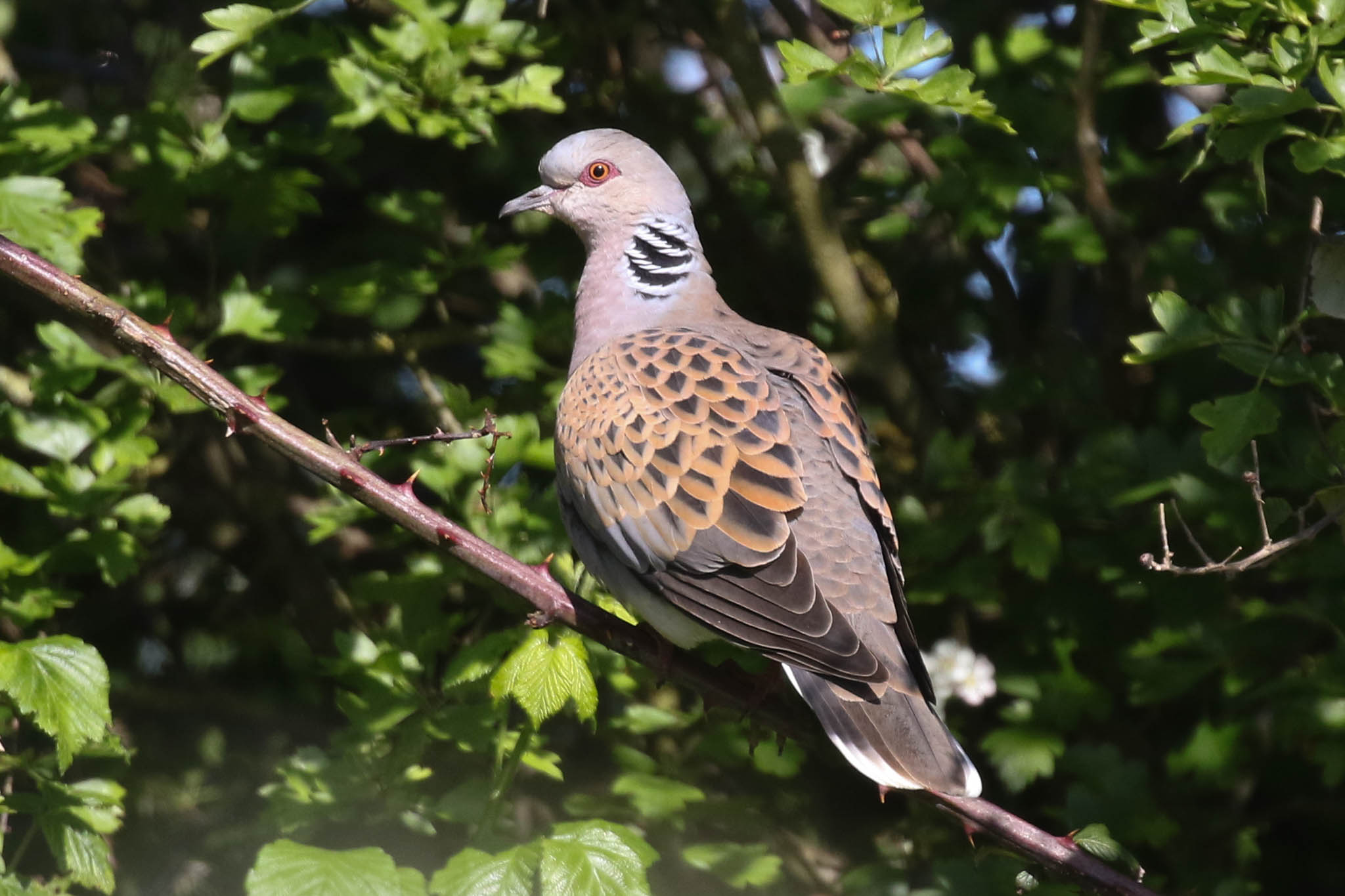
The male Turtle Dove fluttered round the back of the bush at one point, but the female stayed put and after a minute the male came back out again to the same perch. Eventually the male flew a short distance and landed in some more bushes further down and this time the female followed. We decided to leave them in peace.
We made our way up onto the outer seawall now and looked out across the Wash. A Wall butterfly fluttered off ahead of us. A Mediterranean Gull few across out over the water. There were lots of waders out on the edge of the water, but the tide was some way out now so they were all rather distant. We could see lots of Grey Plover, many in stunning breeding plumage, plus a lot of Dunlin, a few Bar-tailed Godwits, and a couple of Curlew.
As we turned to head back into the Coastal Park, a Cuckoo flew across over the other side, just in front of the inner seawall. It dropped down behind some bushes and disappeared – we didn’t see it come out the other side – so we walked over to see if we could find it. There was no further sign, but we did find our first Common Whitethroat of the tour and a Reed Warbler perched up in the reeds singing.
Continuing on up through the Coastal Park, we had great views of several Sedge Warblers, perched up in the bushes singing. A couple of the pairs of Stonechats already had a few streaky juveniles in tow. There were lots of Linnets, including some smart pink-breasted males and more Common Whitethroats. We could hear another Turtle Dove purring and eventually found it further up, perched in the top of a large hawthorn. Another Turtle Dove flew past us.
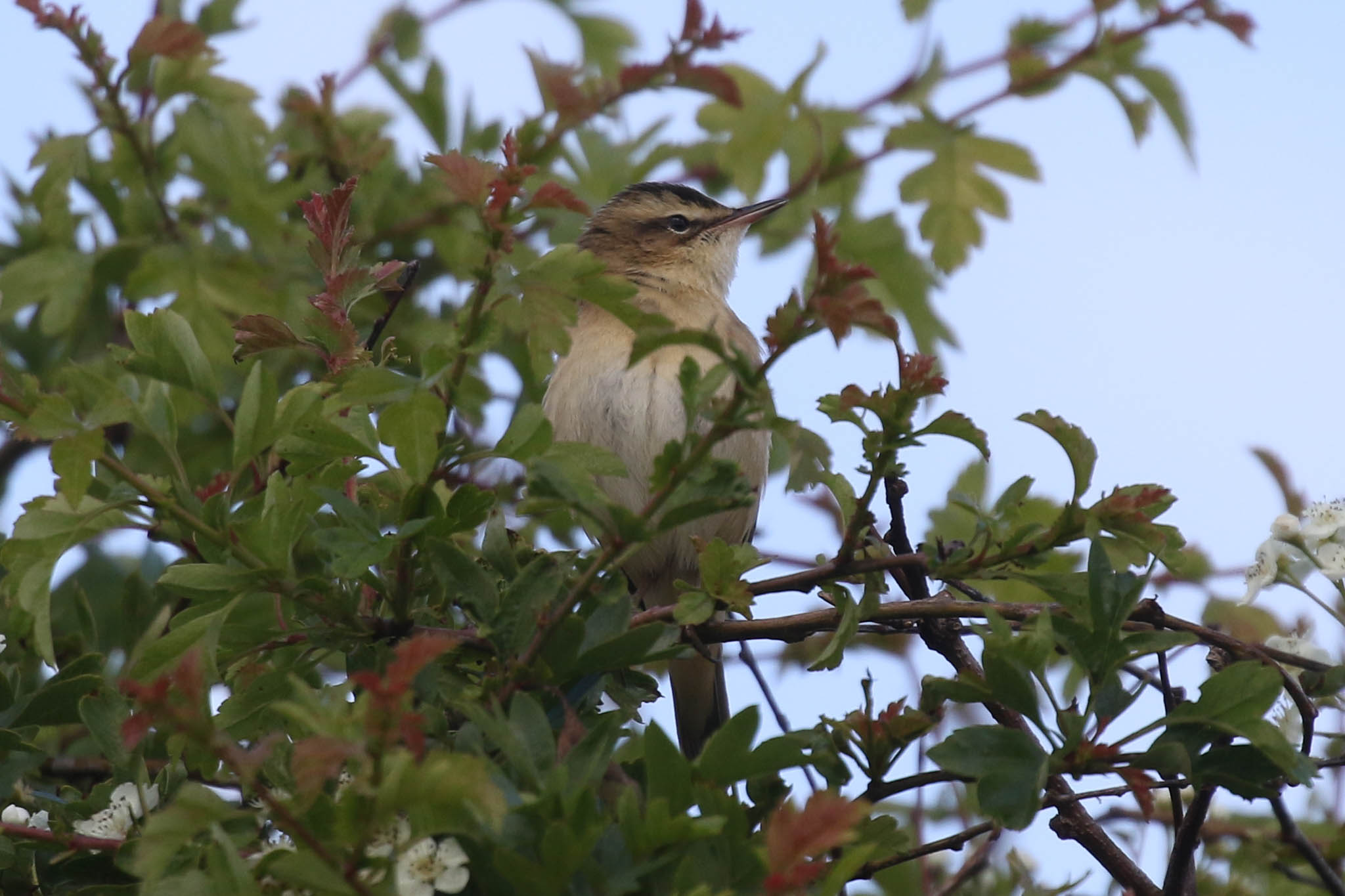
Up at the crossbank, we had another look out at the Wash. There were two Ringed Plovers on the mud here, a bit closer this time, and another Bar-tailed Godwit with them. The latter had a bad limp, which might explain why it wasn’t way out on the mud with the others.
Three Tufted Ducks were on the pool beyond the crossbank, as we walked across to inner seawall. From the top, we looked out over the marshes the other side. There were lots of geese, Shelduck, ducks and Avocets. Some of the Canada Geese and Greylags had small goslings with them. Lots of Swifts and hirundines were hawking out over the marshes, others continuing on south – migration in progress.
A grey male Marsh Harrier was hunting out over the grazing marshes. We watched a Kestrel hovering over the grass, then drop down sharply, coming back up with something small in its talons.
We had been told that there were some Whinchats and Wheatears further north, at Heacham this morning, but we couldn’t walk all the way up there today. So we kept scanning the grazing marshes to the north of the crossbank, in case there were any here. We found just a few more Stonechats at first, and then a Whinchat appeared on the top of a clump of brambles. We had a look through the scope first, then walked up for a slightly closer view, but by the time we got there it had disappeared. A female Wheatear appeared on the bush instead, and we found another Wheatear out on the grass further over, a male this time.
We walked back down along the inner seawall, scanning the marshes as we went. All we could add to the list were two Black-tailed Godwits. Small flocks of Common Swifts shot past us, making their way south and round the Wash.
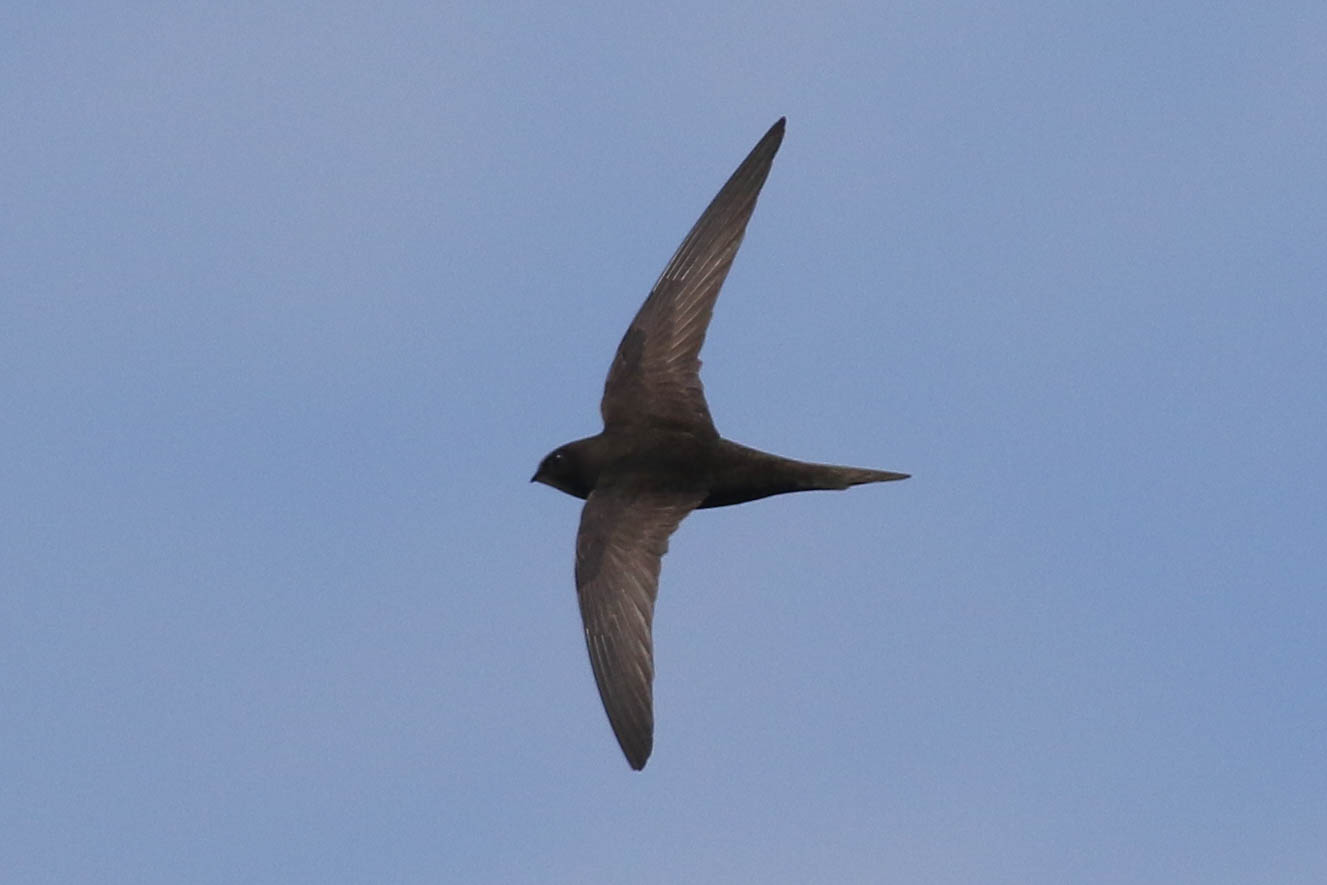
When we heard a Turtle Dove purring again, we stopped to look and found it perched in a tall tree in the middle of the Coastal Park. It took off and fluttered up in display flight, gliding down in circles before landing again in the same tree. It was joined by a second Turtle Dove on the same branch and we thought initially it must be a female, but the first first one flew straight at it and chased it off. Presumably a rival male, it flew off and landed on the fence by the marshes, then back and off north. It was pursued by the first Turtle Dove in display flight again.
There were lots of freshly emerged dark damselfies fluttering around in the vegetation on the bank. The ones we looked at more closely were Azure Damselflies, and we did see one older blue male. There were several butterflies out too, mostly whites including a number of Green-veined White, but almost back to the road a Small Heath fluttered up from the grass, our first of the year.
It had been a very fruitful morning, and we made our way round to Titchwell now for lunch. Afterwards, we headed out onto the reserve. A flock of Common Pochard came up off the new pool in the reeds as we passed and a Great White Egret flew up out of the reedbed and landed again in the reeds further back. A single Great Crested Grebe was out on the reedbed pool. A Marsh Harrier was perched on one of the dead trees at the back.
As it was sunny, we scanned the Freshmarsh from the bank. There are lots of Avocets here, with good numbers on nests, they seem to appreciate the new islands which were created in the works last year. Speaking to the warden who happened to be passing, it is a very good year for them, possibly the third best ever and the best for some time.
There was a little huddle of Dunlin and Turnstones on the edge of the new bund, further back. Several of the Turnstones were in their striking breeding plumage, with lots of white on the head and rich chestnut bands in the upperparts. One helpfully picked its way along the edge of the water straight towards us, so we could get a closer look.

There were a couple of Common Sandpipers around the muddy edges of the island. Several Ringed Plovers probably included a mixture of passage northern tundrae and local nominate birds which breed here. A Little Ringed Plover was picking around on the mud right below the bank, so close we could see its golden yellow eye ring with the naked eye.

Scanning the Freshmarsh, we picked up a lone Whimbrel further back on the edge of Avocet Island. We had a look at it through the scope before it took off and flew past us over the bank and off west calling. A small group of Black-tailed Godwits was right over in the far corner. A Spoonbill flew in over the bank, circled the Freshmarsh, and carried on east without stopping.
There were two pair of Common Terns on the new islands, in with the Black-headed Gulls. One of the Common Terns took off and started fishing, hovering right in front of us over the shallow water. When it plunged down into the water, it came back up with a fish in its bill. It flew back to the island and gave it to the female. When it flew back to have another go, a second Common Tern was on the mud below calling and flapping its wings. We weren’t sure what was going on at first, but the second tern took off and the two started fighting, locked together, tumbling down into the water!

Four Little Terns appeared, and chased each other round and round, landing briefly on the new bund. A Sandwich Tern dropped in with the gulls, long enough for us to get a good look at it through the scope, before it flew off towards Scolt. There was a Little Gull here too, a 1st summer. It was swimming on the water out towards the Parrinder bank at first, then flew round showing off the distinctive ‘w’ upperwing pattern, before it landed again on the mud and went to sleep.
Four Little Terns appeared, and chased each other round and round, landing briefly on the new bund. A Sandwich Tern dropped in with the gulls, long enough for us to get a good look at it through the scope, before it flew off towards Scolt. There was a Little Gull here too, a 1st summer. It was swimming on the water out towards the Parrinder bank at first, then flew round showing off the distinctive ‘w’ upperwing pattern, before it landed again on the mud and went to sleep.
There were lots of Swifts and hirundines hawking out over the Freshmarsh and the reedbed, but despite looking through carefully, we couldn’t find anything unusual in with them. As we had seen this morning, they are on the move at the moment and stopping off here to feed.
We made our way on, out towards the beach. The tide was in, and the Volunteer Marsh channel was full of water. A group of Oystercatchers was roosting on the island on the Tidal Pools, and another Common Tern and a Little Tern were hunting close to the bank. We stopped to watch two Spoonbills feeding on a saltmarsh pool opposite, sweeping their bills side to side through the shallow water. They seemed to be finding lots of food.
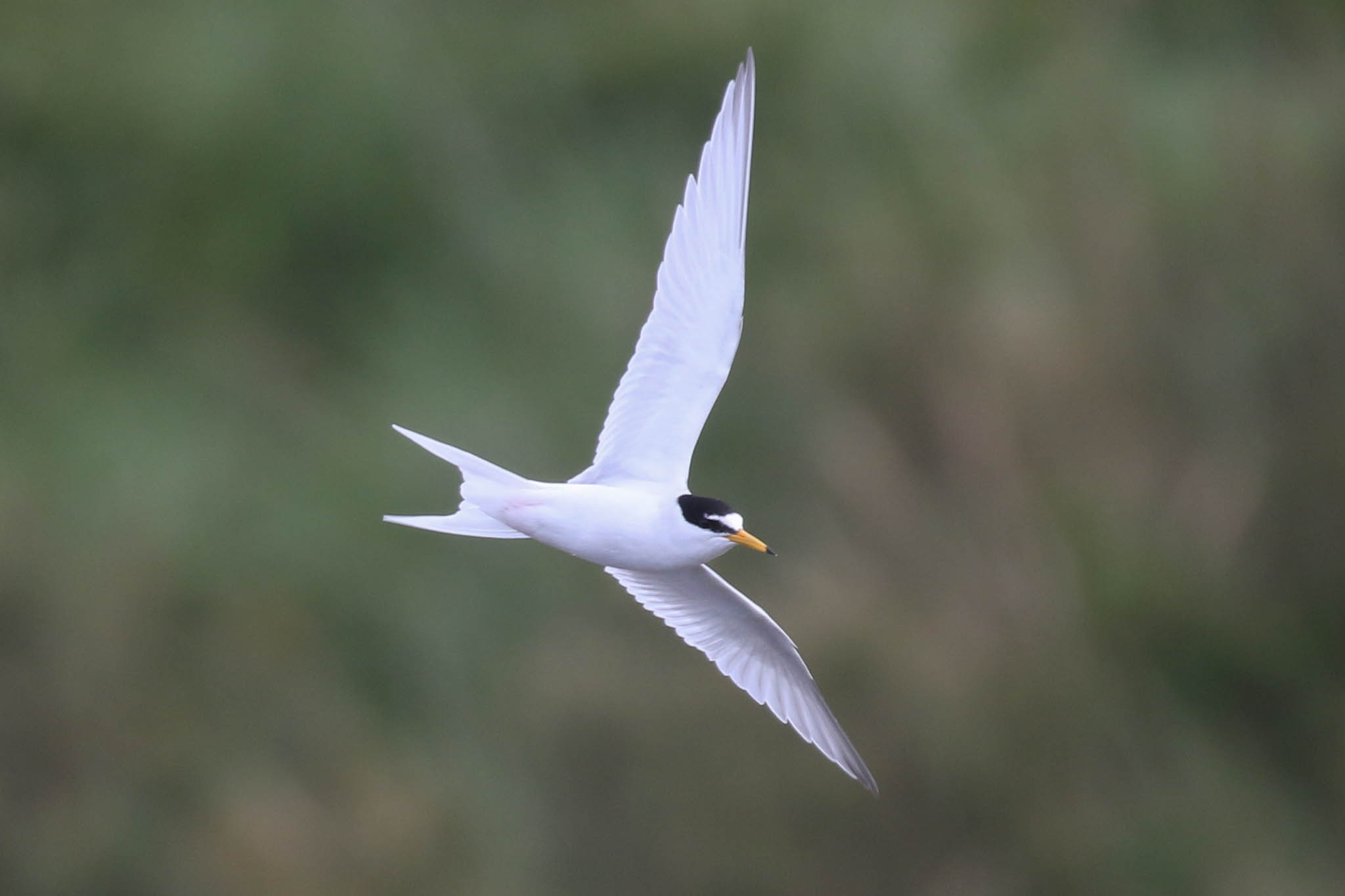
Out at the beach, there were some little groups of Sanderlings still on the shoreline. We had a quick look at the sea which produced six Common Scoter out on the water, and five distant Gannets flying past. Then we headed back.
Back at the Freshmarsh, the Little Gull was awake again and much closer now than it had been earlier, so we stopped for another look before heading back to the car park. A very dainty small gull, we had a great view as it picked for insects on the water’s surface.
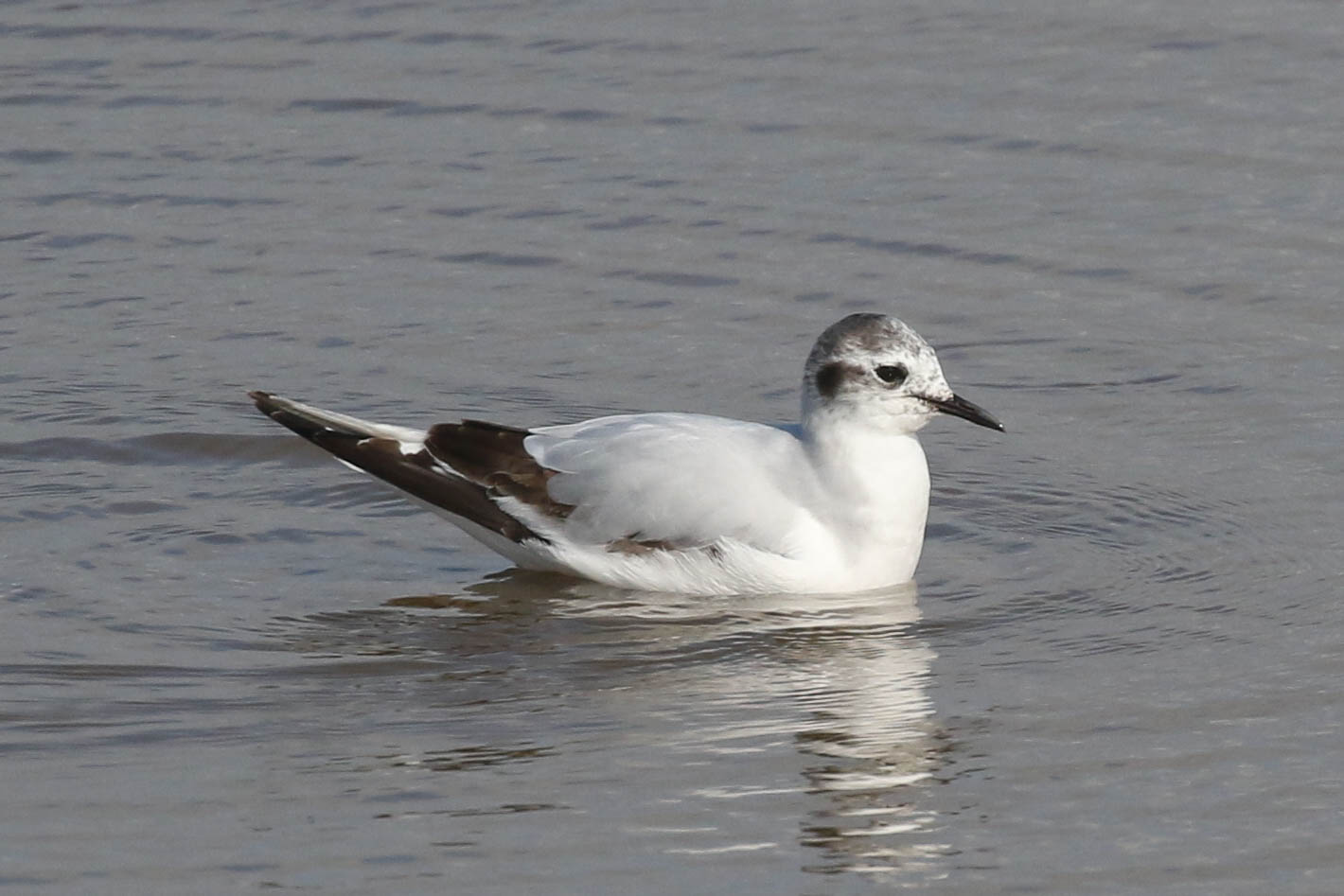
Before we headed for home, we decided to have a very quick look at Ringstead. There had been no reports of the Dotterel yesterday in the rain, and as we had driven past earlier we could see there was no one looking today. Whilst there had been a big clear out of waders along the coast on Tuesday night, the Dotterel often stay later than this, so we figured we should at least have a go.
As we walk up the lane, we could hear a Yellowhammer singing behind us, and looked back to see a smart yellow male perched in the top of a hawthorn. A Wheatear was out in the middle of the field opposite. There were lots of Brown Hares here too – we stopped to watch three chasing each other in circles and even boxing briefly, before they lost interest.
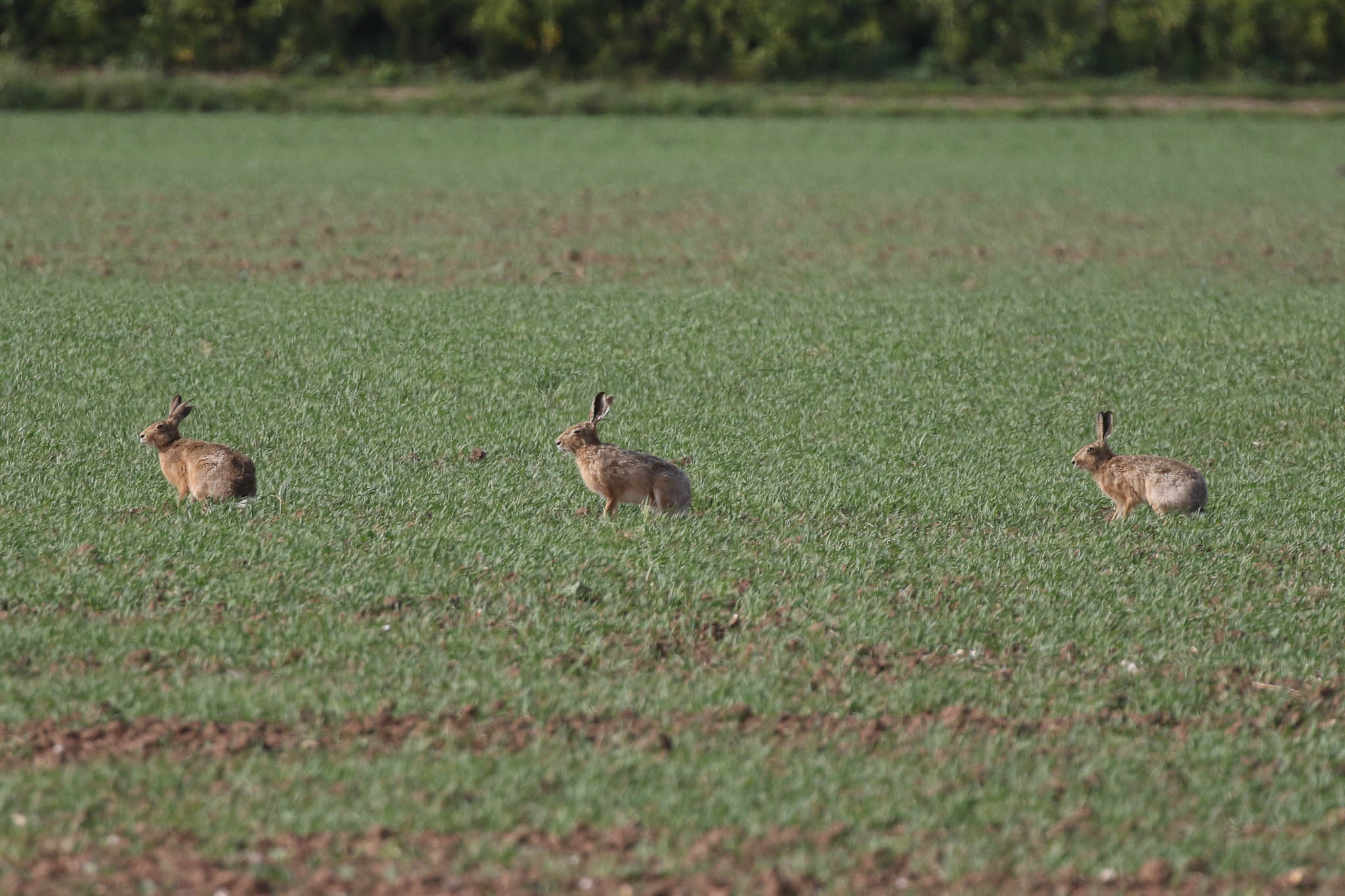
Perhaps unsurprisingly there was no sign of any Dotterel now in the field they had been frequenting – nothing ventured. There were several Stock Doves and a few Red-legged Partridges. A Skylark at the back of the bare field opposite looked like it might be something more interesting in the heat haze until we got a closer look.
It was time to head back. As we walked back along the lane, three Whimbrel flew over calling and disappeared off north, a reminder that wader migration continues. It had been a good start to the tour – we were looking forward to more tomorrow.
















